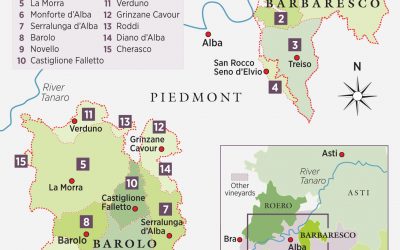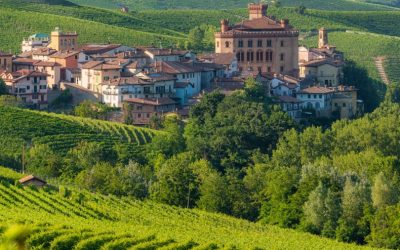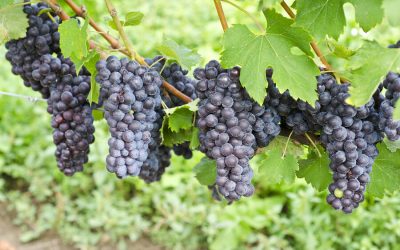Is Barolo a heavy wine? Here are some key facts about this wine
Emanating from the heart of Italy’s Piedmont region, Barolo is a wine that surprises and enchants with its paradoxical nature. Renowned for its characteristic light hue yet profound depth of flavor and structure, Barolo effortlessly melds grace with power. This unique aspect of Barolo, a wine derived entirely from the Nebbiolo grape, has stirred curiosity and captivated the hearts of wine connoisseurs across the globe.
What Is Barolo?
| Aspect | Details |
|---|---|
| Region | Piedmont, Italy |
| Appellation | Barolo DOCG |
| Grape Variety | 100% Nebbiolo |
| Wine Type | Dry, full-bodied red |
| Characteristics | High tannins, firm acidity, complex flavors, light color yet robust taste |
| Aging Potential | High – often benefits from years, even decades, of aging |
| Pairing Suggestions | Rich meat dishes, hearty stews, truffles, aged cheeses |
| Noteworthy | Known for its unusual combination of light color and full-bodied taste |
Barolo is one of the most famous and highly regarded wines from Italy. Named after the village of Barolo in the Piedmont region of northwest Italy, it is often referred to as the “king of wines and the wine of kings.” Here are some key facts about Barolo:
1. Grape Variety: Barolo is made entirely from the Nebbiolo grape, a variety native to Piedmont. Nebbiolo grapes are known for their robust tannins and high acidity, which contribute to the longevity and complex flavors of Barolo wines.
2. Region: The Barolo wine region is located in the Langhe hills of Piedmont, surrounding the towns of Barolo, La Morra, Castiglione Falletto, Monforte d’Alba, and Serralunga d’Alba. The region’s climate and geology, particularly its calcareous clay soils, are ideal for Nebbiolo grapes and contribute to the wine’s unique character.
3. Aging Requirements: According to the Denominazione di Origine Controllata e Garantita (DOCG) regulations, Barolo wines must be aged for a minimum of 38 months after the harvest, with at least 18 months in wooden barrels. Riserva wines require a minimum of five years of aging.
4. Flavor Profile: Barolo is a full-bodied red wine with high tannins and acidity. Its flavors can be complex, with notes of cherries, tar, roses, and truffles often detected. Barolos are also known for their earthy and floral aromas.
5. Aging Potential: Thanks to their high tannin and acidity levels, Barolos have excellent aging potential. Many require several years to reach their peak and can then continue to mature for several more decades.
6. Food Pairing: Barolo pairs well with rich, hearty dishes due to its robust structure and high tannins. Examples include truffle-based dishes, risotto, red meats, and mature cheeses.
Due to its complexity, longevity, and the care taken in its production, Barolo is generally considered a luxury wine and can command high prices, particularly for well-regarded vintages and producers.
Is Barolo a heavy wine?
Yes, Barolo is often considered a “heavy” or “full-bodied” wine, in terms of its high alcohol content, robust tannin structure, and intense flavors. Made from the Nebbiolo grape in Italy’s Piedmont region, Barolo is known for its deep garnet color, complex bouquet, and a palate that can include notes of tar, roses, cherries, and truffles.
Due to its high tannin content, Barolo is often described as a powerful, assertive wine, which can come off as intense or “heavy” to those who are not accustomed to such wines. It’s also known for its excellent aging potential, with many Barolos requiring several years in the bottle to soften their tannins and develop their full range of flavors.
It should be noted, however, that while Barolo is a full-bodied wine, it’s not “heavy” in the sense of being overwhelming or unbalanced. Instead, its power and intensity are balanced by its high acidity and complex, layered flavors, making it a richly rewarding wine for those who appreciate its unique character.
When should you drink a Barolo bottle?
Barolo, made from the Nebbiolo grape, is a wine that is known for its robust tannins and high acidity, which gives it excellent aging potential. While the specific “drinking window” (the period during which a wine is expected to be at its best) can vary depending on the vintage and the producer, most Barolo wines can be cellared for at least 10-15 years, and top-quality Barolos can often be aged for several decades.
If you’re drinking a young Barolo (less than 10 years old), you may find that the tannins are quite pronounced, which can make the wine seem harsh or unbalanced. Decanting young Barolos can help to soften the tannins and make them more approachable in their youth. For older Barolos (20 years or more), the flavors and aromas can develop into complex notes of dried fruit, tobacco, and leather. However, as with any aged wine, there is a risk that the wine could become overaged, where it starts to lose its fruit character and vitality.
In general, a good rule of thumb is to check the producer’s recommendations or consult with a knowledgeable wine merchant about the optimal drinking window for the specific bottle of Barolo you have. Remember, individual preferences can vary widely, and part of the fun of wine is exploring these for yourself!
Why You Should Pay More Attention to Barolo Wines 5 Great BAROLO Wines You Must Try (While They Are Still Affordable)

Conclusion:
In the grand tapestry of Italian wines, Barolo distinguishes itself with its compelling juxtaposition of light color and robust palate, testament to the remarkable versatility of the Nebbiolo grape. Whether you’re a seasoned wine lover or a curious beginner, the singular experience of savoring a glass of Barolo, with its powerful yet graceful persona, is an exploration worth undertaking.




